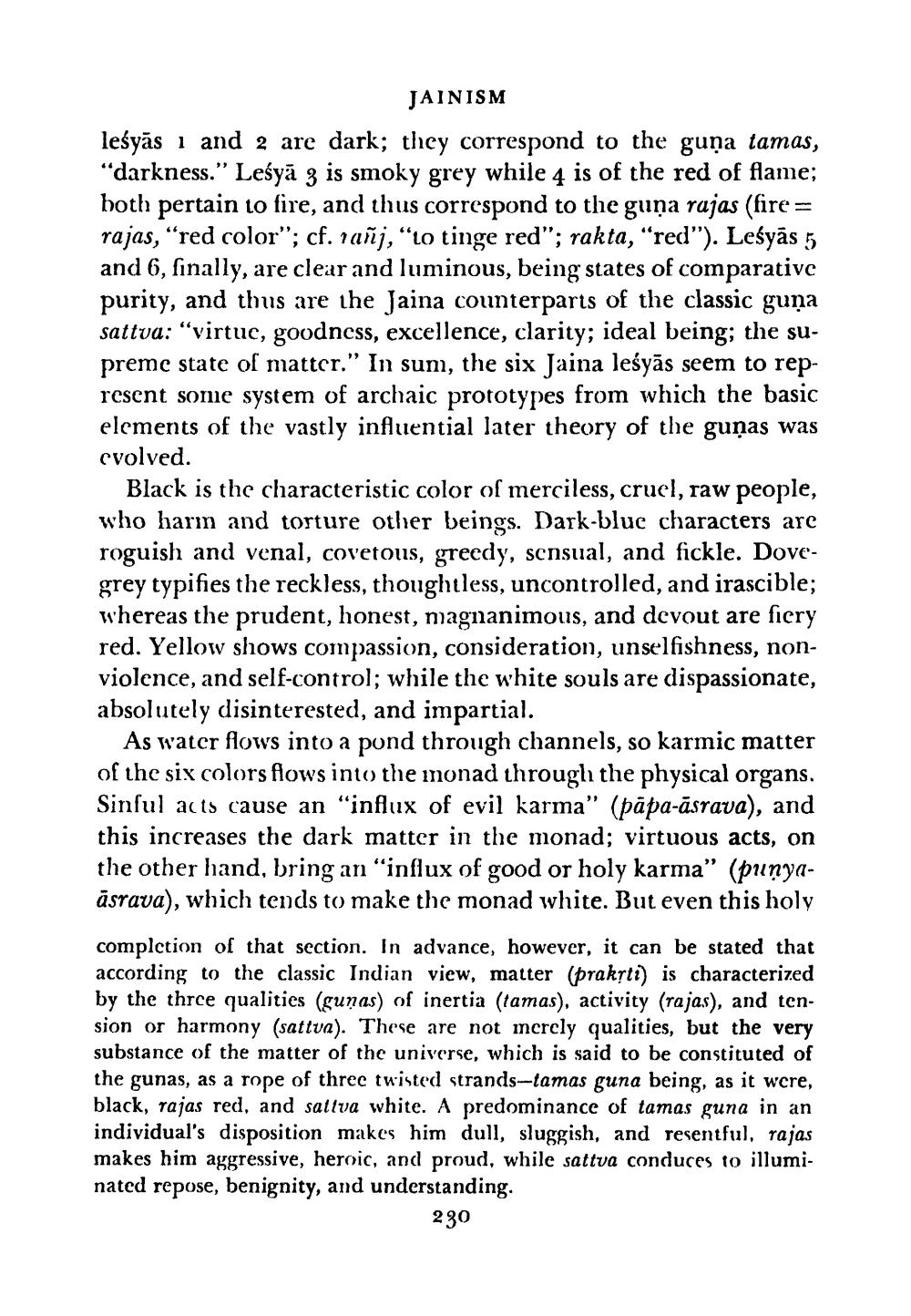________________
JAINISM
leśyās 1 and 2 are dark; they correspond to the guna tamas, "darkness." Leśya 3 is smoky grey while 4 is of the red of flame; both pertain to fire, and thus correspond to the guna rajas (fire = rajas, "red color"; cf. ranj, "to tinge red"; rakta, "red"). Lesyās 5 and 6, finally, are clear and luminous, being states of comparative purity, and thus are the Jaina counterparts of the classic guna sattva: "virtue, goodness, excellence, clarity; ideal being; the supreme state of matter." In sum, the six Jaina leśyās seem to represent some system of archaic prototypes from which the basic elements of the vastly influential later theory of the gunas was cvolved.
Black is the characteristic color of merciless, cruel, raw people, who harm and torture other beings. Dark-blue characters are roguish and venal, covetous, greedy, sensual, and fickle. Dovegrey typifies the reckless, thoughtless, uncontrolled, and irascible; whereas the prudent, honest, magnanimous, and devout are fiery red. Yellow shows compassion, consideration, unselfishness, nonviolence, and self-control; while the white souls are dispassionate, absolutely disinterested, and impartial.
As water flows into a pond through channels, so karmic matter of the six colors flows into the monad through the physical organs. Sinful acts cause an "influx of evil karma" (pāpa-āsrava), and this increases the dark matter in the monad; virtuous acts, on the other hand, bring an "influx of good or holy karma" (punyaasrava), which tends to make the monad white. But even this holy
completion of that section. In advance, however, it can be stated that according to the classic Indian view, matter (prakṛti) is characterized by the three qualities (gunas) of inertia (tamas), activity (rajas), and tension or harmony (sattva). These are not merely qualities, but the very substance of the matter of the universe, which is said to be constituted of the gunas, as a rope of three twisted strands-tamas guna being, as it were, black, rajas red, and sattva white. A predominance of tamas guna in an individual's disposition makes him dull, sluggish, and resentful, rajas makes him aggressive, heroic, and proud, while sattva conduces to illuminated repose, benignity, and understanding.
230




